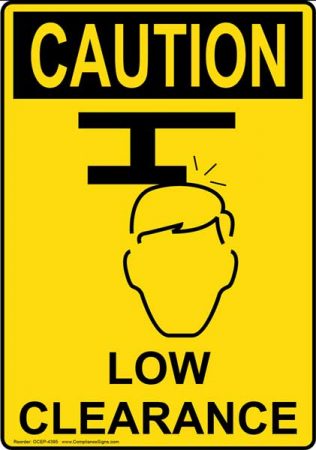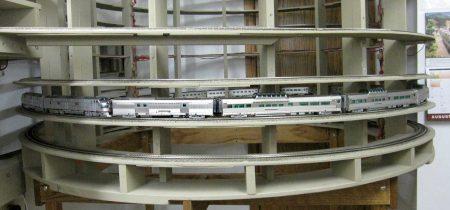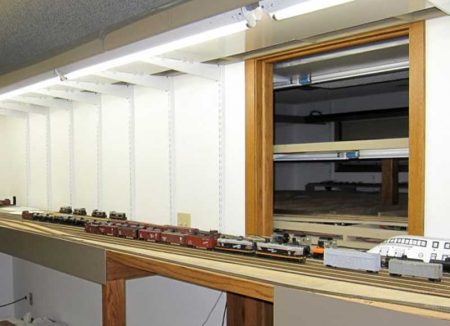Warning – Low Clearance Ahead

Nelson Moyer returns with build tips and techniques for duckunders. Click on any image here to review a larger size. Here’s Nelson with his latest tale.
Burlington Yard and Winfield Duckunder
Duckunders are to be avoided. That’s a cardinal rule of layout design. However, there are circumstances where duckunder alternatives are impossible, and my track plan presented me with no choice if I was going to model even a severely truncated facsimile of the CB&Q yard at Burlington, IA. By referring to the track plan in Part 1 of the series, it is immediately evident that the longest unbroken spaces in my basement are on the North and South outside walls, and those walls measure 16- and 18-feet, respectively. That’s not nearly long enough for Burlington, and the placement of those walls is totally wrong for a geographical approximation of the prototype.


